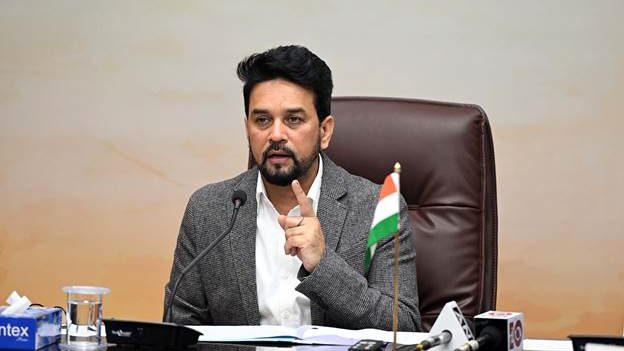Stating that Khelo India has revolutionised the sports ecosystem in the country, Union Minister for Youth Affairs and Sports, Anurag Thakur on Thursday informed that more than 300 sporting infrastructure projects worth Rs 3,000 crore have been implemented under the ‘Khelo India’ scheme.
In Decmber 2023, the sports minister announced that 341 sports infrastructure projects were sanctioned under the flagship Khelo India Scheme and National Sports Development Fund (NSDF). More than 1,000 Khelo India centers in 679 districts across 36 states/Union Territories and 32 Khelo India State Centres of Excellence in 31 states/UTs, have been notified, Thakur further mentioned
“Even the Target Olympic Podium Scheme (TOPS) has transformed, providing athletes with foreign exposure, training, and world-class coaching apart from financial support to the tune of Rs 25,000-50,000 per month as an out-of-pocket allowance,” Thakur said
It is noteworthy that both Khelo India and TOPS scheme are marquee initiatives of the government of India that work towards strengthening the grassroots sports infrastructure and athlete ecosystem by providing holistic support.
The Union Minister was addressing the students and athletes virtually at Bennett University’s inter-university sports tournament ‘Sportikon’ where he mentioned the pathbreaking effort at how the Khelo India program adds 1,000 new athletes every year, providing them with comprehensive funding for training, accommodation, diet, and a monthly allowance.
The second edition of the 4-day sports fest ‘Sportikon’ is being held at Bennett University from February 22 to February 25. The sports event is witnessing the participation of more than 1,200 athletes from 51 universities from all over India.
Khelo India: Nurturing grassroot sports ecosystem
In addition, 296 sports academies have also been accredited in 23 states/UTs.
Notably, Khelo India is the flagship sports scheme, which has been infusing sports culture and achieving sporting excellence in the country since its launch in 2016, harnessing the power of sports through its cross-cutting influence.
The initiative includes playfield development, promotion of community sports, community coaching development, and the establishment of a strong sports competition structure at both school and university levels. Further, it also encourages rural/indigenous sports, sports for persons with disability, and women’s sports.

